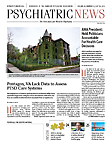The AMA House of Delegates has approved guiding principles for ensuring appropriate coverage of and payment for telemedicine services.
The principles aim to foster innovation in the use of telemedicine, protect the patient-physician relationship, and promote improved care coordination and communication with medical homes, according to a report by the AMA’s Council on Medical Services (CMS). The CMS report was approved without debate at last month’s annual policymaking meeting of the House of Delegates. (For a short list of major items of business at the meeting relevant to all of medicine, including the AMA response to the crisis at the VA, see box below).
“We believe that a patient-physician relationship must be established to ensure proper diagnoses and appropriate follow-up care,” said incoming AMA President Robert Wah, M.D., in a statement about the report. “This new policy establishes a foundation for physicians to utilize telemedicine to help maintain an ongoing relationship with their patients and as a means to enhance follow-up care, better coordinate care, and manage chronic conditions.”
The report includes the following recommendations to guide use of telemedicine:
A valid patient-physician relationship must be established before providing telemedicine services, through a face-to-face examination, if a face-to-face encounter would otherwise be required in the provision of the same service not delivered via telemedicine; a consultation with another physician who has an ongoing relationship with the patient; or meeting standards of establishing a patient-physician relationship included as part of evidence-based clinical practice guidelines on telemedicine developed by major medical specialty societies. Exceptions to the foregoing include on-call, cross-coverage situations, emergency medical treatment, and other exceptions that become recognized as meeting or improving the standard of care. If a medical home does not exist, telemedicine providers should facilitate the identification of medical homes and treating physicians where in-person services can be delivered in coordination with the telemedicine services.
Physicians and other health practitioners delivering telemedicine services must abide by licensure and medical practice laws and requirements in the state in which the patient receives services.
Physicians and other practitioners delivering telemedicine services must be licensed in the state where the patient receives services or be providing these services as otherwise authorized by that state’s medical board.
Patients seeking care delivered via telemedicine must have a choice of provider, as required for all medical services.
The delivery of telemedicine services must be consistent with state scope-of-practice laws.
Patients receiving telemedicine services must have access to the licensure and board-certification qualifications of the practitioners providing the care in advance of their visit.
The standards and scope of telemedicine services should be consistent with related in-person services.
Delivery of telemedicine services must follow evidence-based practice guidelines, to the degree they are available, to ensure patient safety, quality of care, and positive health outcomes.
Telemedicine services must be delivered in a transparent manner, to include but not be limited to, the identification of the patient and physician in advance of service delivery, as well as patient cost-sharing responsibilities and any limitations in medications that can be prescribed via telemedicine.
The patient’s medical history must be collected as part of the provision of telemedicine service.
Provision of telemedicine services must be properly documented and should include providing a visit summary to the patient.
The provision of telemedicine services must include care coordination with the patient’s medical home and/or existing treating physicians, which includes, at minimum, identifying the patient’s existing medical home and treating physician(s) and providing to the latter a copy of the medical record.
Physicians, health professionals, and entities that deliver telemedicine services must establish protocols for emergency referrals.
“Telemedicine is very important for psychiatry in increasing access to care,” said John McIntyre, M.D., a past APA president and current chair of the AMA Council on Medical Services. “It is already being used in rural and other settings where access to psychiatrists has been a problem, such as prisons.”
McIntyre told Psychiatric News that the report is intended to support the innovative use of telemedicine while maintaining quality of care—including the use of evidence-based guidelines—and ensuring patient safety and privacy of information. In addition, the guidelines protect the patient-physician relationship and encourage improved communication among those involved in the patient’s care, he said.
“An issue that was debated, both in our council in preparing the report and at the House of Delegates, was whether an initial in-person encounter should occur before subsequent telemedicine services,” McIntyre said. “The conclusion. . .was that the initial face-to-face session could occur via telemedicine, although certain parameters had to be met, and these are included in the recommendations of the report.”
He said that the council also emphasized the importance of licensure issues, since there is strong sentiment in the House of Delegate against moving toward national licensure and in favor of maintaining state authority over licensure. “But there has to be some flexibility to allow telemedicine across state lines,” he said, and thus the issue will receive further study by AMA councils. ■
A list of reports and resolutions voted on at the House of Delegates meeting can be accessed
here.
